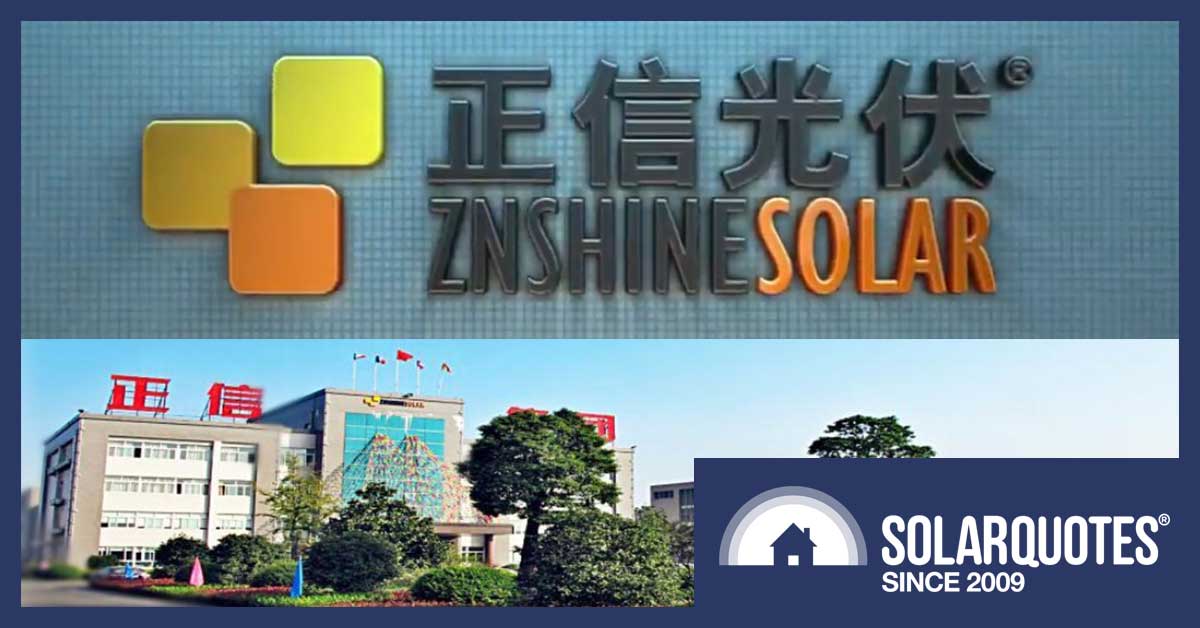
ZNShine Solar Panels: Low Cost & Tier One But No Australian Office
If you want the dirt on ZNShine panels I’ve got some bad news for you. According to ZNShine Solar, dirt just slides right off their new graphene coated panels when it rains.
But while it may be difficult to get dirt on their panels, I can tell you everything I know about them. This isn’t as much as I’d like, as you can probably tell by the fact I’ve padded out this article with a picture of a giant robot panda.
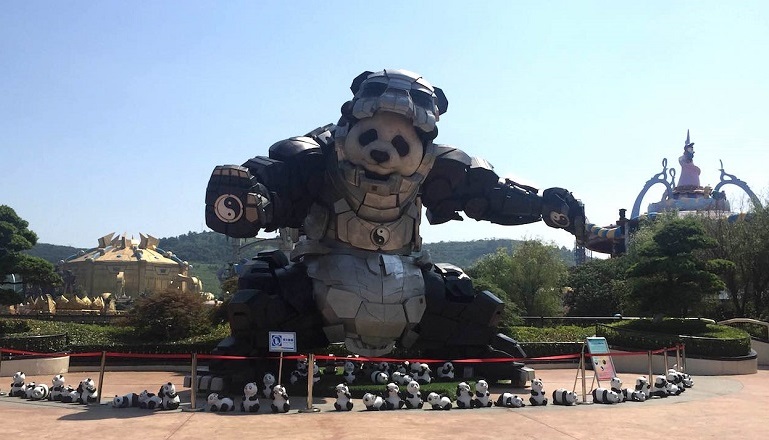
You can see this giant robo kung-fu panda in the city of Changzhou where most ZNShine panels are made. (Image: The Hollywood Reporter)
ZNShine makes up a small but increasing portion of the solar panels being installed in Australia. They are tier one, which hopefully indicates that solar farm developers consider them reliable.
But they are a low cost tier one panel. They have a 10 year product warranty1, which is now the industry minimum, and their standard solar panels have a typical performance warranty of 25 years. ZNShine Solar does not have an Australian office. This means responsibility for the warranties lies with the installer and the importer. Sometimes the installer is the importer, which means if they go bust the warranties will disappear with them.
Update 9th December 2019: ZNShine now have an Australian office in Parramatta, Sydney.
What’s In A Name? Possibly Zinc.
Australians who dare utter their name usually pronounce ZNShine as Zed-Enn-Shine. But on a ZNShine Youtube video — which had just 160 looksies prior to me catapulting it into fame — they pronounce it as Zen-Shine. I presume that’s how it’s meant to be said but for all I know it’s simply what the voice actor and director settled on after a brief argument and fist fight.
Why they want it pronounced as Zen-Shine, I don’t know. Zen Buddhism originated in China, but they don’t pronounce it as “zen” there. That’s how the Japanese say it. But ZNShine sell solar panels in Japan so the name may have been a cunning plan to boost sales there. It would be like selling Baptist panels in the United States.2
But as I am a master of chemistry3, the first two letters of ZNShine Solar make me think of Zn, which is the chemical symbol for zinc. If you paid attention in school you would know this is one of the most vital elements in our modern lives:
Zinc is so vital – one of the few things that is even more important is zinc oxide:
Locations
ZNShine’s headquarters are in Changzhou, a city of maybe 5 million about 150km northwest of Shanghai4. ZNShine’s Chengzhou production capacity consists of:
- 2.7 gigawatts of standard solar panel capacity.
- 300 megawatts of double glass production capacity.
Their video told me their Changzhou factory was fully automated and then showed me this picture:
I think they either they need to check the dictionary for the meaning of the term “fully automated” or they have some really advanced robots.5
In addition to their Chinese manufacturing capacity, ZNShine Solar have an additional 200 megawatts of capacity artistically scattered across the world:
- India 70 megawatts
- Poland 50 megawatts
- Canada 40 megawatts
- Czech Republic 40 megawatts
Well, I say artistically scattered, but I presume the European and Canadian capacity is there to avoid import tariffs and the Indian capacity is to meet local content requirements.
Their total production capacity comes to 3.2 gigawatts, which these days makes ZNShine a medium sized solar manufacturer.

As you can see, China’s metal tentacle technology is far more lightweight and convenient than America’s.
ZNShine’s Solar Panels
ZNShine’s standard panels are similar to other low cost tier one solar panels:
- Their efficiency ranges from 15.6% to 18.9%.
- They have lower efficiency polysilicon panels and higher efficiency monosilicon panels.
- Their efficiency loss due to heat is typical.
- Their size and weight is standard.
- Their product warranty is 10 years and their performance warranty is 25 years.
ZNShine Solar also produces double glass panels. They share the same 10 year product warranty but have a 30 year performance warranty.
Graphene Coating
I hope you are now aware of the importance of zinc to our modern lives, but I have to admit carbon is even more important. It forms so many chemical compounds it’s the plug and play atom of the universe. Graphene is a special form of carbon that is a layer only one atom thick. In the future it may be used to make better solar cells but right now ZNShine is using it for a coating on the glass of their solar panels. This has two advantages:
- It reduces reflection and increases the transmission of light through the glass.
- It makes the solar panel dirt resistant.
By increasing the amount of light that passes through, graphene may increase the output of a panel by 1-2 watts. This isn’t much, but every bit helps. However, it doesn’t compare will with anti-reflective coatings used by high end solar panels that can be more than 7 times as effective.
The graphene coating also makes the panel hydrophilic, which means water loving, while normal glass is hydrophobic6, which means water fearing. On normal glass, water is much more attracted to itself than it is to the glass and so forms beads and droplets. But water just loves touching graphene and will spread out evenly over glass coated with it. This means even a little water can wash away dirt and droplets of water won’t be left behind that can evaporate and leave dirt.

What ZNShine describes as normal glass is on the left and glass with a dirt resistant graphene coating is on the right.
ZNShine Solar says the coating’s dirt resistance can increase a panel’s output by 5%, but I don’t believe them. This could be true in dirty places that may be common in China, but in most of Australia rainfall on ordinary solar panels should be enough to keep total losses from dirt under 5%. So even if the graphene coating was miraculously effective, the improvement in output shouldn’t be that high.
Update 9th December 2019: This article in PV Magazine describes testing where an ZNShine panel with graphene coating produced 1.1% more output per watt than a similar ZNShine panel without it when neither were cleaned.
I’m also concerned the graphene layer could rapidly wear out because it’s only one atom thick. They may have developed a way to make it last long term, but because ZNShine Solar doesn’t give any information on this it makes my suspicious mind think it may not last long. Hopefully, my suspicious mind is wrong about this.
While ZNShine can provide panels with graphene coating it is not a standard feature on any of their solar panels at the moment. It’s an optional extra. But they appear to be going all in and by the end of this year say they will have increased their panel manufacturing capacity to 5 gigwatts of graphene coated panels.
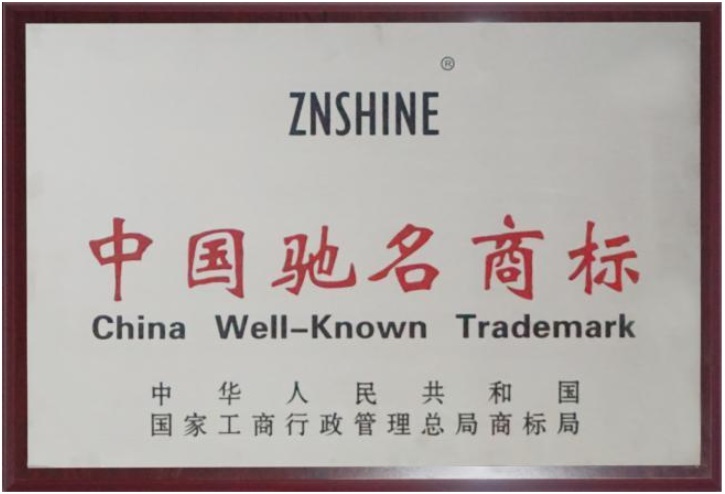
In China ZNShine isn’t just a trademark, it’s a well known trademark.
ZNShine Importers And Warranties
ZNShine don’t have an office in Australia. This means if you have a problem with ZNShine solar panels while they are under warranty there are two places you can potentially turn for a remedy:
- Your installer
- The panel importer
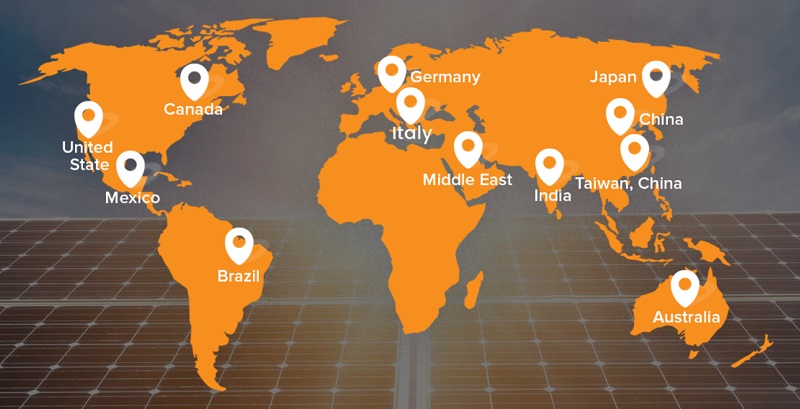
Their map makes it look like they have a presence in Australia, but all I could find was a post office box.
The first port of call is your installer. Unfortunately, installers sometimes go out of business. If this is the case the importer is required to support the warranties, but this can be a problem because:
- Many people have no idea who the importer was.
- Importers can go out of business.
- Your installer could have been the importer.
If you can’t identify the importer or they are no longer around then you’ll have no warranty support. If the installer directly imports the solar panels, as some large budget installers do, then you are at greater risk because if they go bust they’ll take all warranty support with them. If the installer and the importer are separate companies there’s a better chance at least one of them will be around in the future if you need them.
With luck you won’t need to make a warranty claim because ZNShine Solar panels will turn out to be reliable. I would like to think that Wang Dong7, the technical and quality general manager of Znshine Solar, is working hard to maintain rigorous standards for every solar panel that leaves one of their factories. But because I don’t have any information on the quality of ZNShine solar panels arriving in Australia and because they don’t have an office in this country, they are not among one of the panel brands we recommend, which you can find in our Solar 101 Guide.
I think you’d be better off with ZNShine than a random, low cost panel, so if you think they’re a good deal I’m not going to try to talk you out of getting them. But personally, I’d choose a solar panel brand with an Australian office that I can fall back on for an additional layer of warranty support.
Footnotes
- Update 30th Oct 2019: ZNShine have told me their double glass panels have a 15 year product warranty and 30 year performance warranty. ↩
- Update 1 Nov 2019: In the comments Lawrence has kindly mentioned the name ZNShine actually comes from the Chinese word “Xiangxin” and says it, “…has several meanings along a similar vein including; believe in, have trust in, have faith in, regard as true.” This has been confirmed by ZNShine themselves. ↩
- Update 1 Nov 2019: I’m not actually a Master of Chemistry. I should have made that clear because even if people click on my “master” link they still can’t be certain I’m not being serious. ↩
- Actually, it’s more west-northwest, but if you’re ever trying to get from Shanghai to Changzhou I figure you’re smart enough to use Google Maps rather than try to navigate via blog post. ↩
- A fully automated factory should only have two workers — a man and a dog. The dog is there to stop the man touching the controls and the man is there to feed the dog. ↩
- Rabid dogs are also hydrophobic, but that is something entirely different and if you confuse the two meanings it will come back to bite you. ↩
- If you are sniggering at his name I can understand that, but remember with our conventions his name is actually the much more sensible Dong Wang. ↩

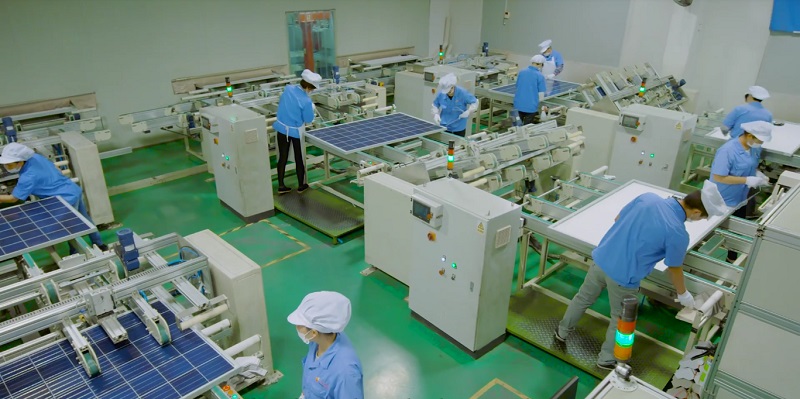
 RSS - Posts
RSS - Posts



Re: ZNShine.
Ron, I recall clearly my first visit to the ZNShine manufacturing facility in Changzhou Jiangsu Province in 2010, for two notable moments.
I organised a renewable energy technologies 14-day tour for Australian CEC accredited installers / RE business owners / electrical contractors / and RMIT RE educators; to learn about and connect with the Chinese RE manufacturing heavy hitters of the time.
Also in our tour group of 16 RE practitioners was the Australian Consul General Grant Dooley to add a bit of political clout to “team RE Australia” and it was great to have the Australian Government add its support to my Chinese based company by making Grant available, as we both served in the RAN together in previous chapters of our lives.
The tour included manufacturers; Gamesa and Suzlon (wind power); Growatt; Eaton; PowerOne and ABB (inverters); CSG, Kinve, Suntech and ZNShine (solar PV); Motech (solar cells), and Ganfu (hydro power). Many RE supply lines were forged through this first ever Aussie technology tour group.
But what was most notable was that ZNShine unlike all other PV manufacturers globally at that time, were the first to trial a robot automatic hands-off PV panel production line to its operations just that week we arrived there. This effectively displaced the hand soldering of PV tracks on solar cells, which was all done by female solderers by hand in a temperature-controlled environment. It was also notable in that I gave an Excel spreadsheet-based projector presentation to the ZNShine executive management that visit, on a large screen forecasting the rapid decline in PV ex-factory price from the current (then) over USD $1.50 per watt to my projected USD $0.45 per watt by December 31st two years hence.
On hearing this, the ZNShine founder and CEO nearly fainted; got up and stormed out screaming the Chinese equivalent of “bull shitting Australians”.
The take away lesson was however – never dismiss Aussie logic and engineering experience lightly.
Within 2 years the price hovered around USD $0.45 per watt, and ZNShine like many other manufacturers struggled to survive as a result. But they did so under the leadership of the founders’ son who returned from working and studying in the USA to the family business in 2010. ZNShine are very highly regarded by many globally who know what makes the industry tick regarding manufacturing endurance.
PS. The trial robot production line failed badly and soldering by hand was quickly reinstated. Its all working well now though. As a technology manufacturer myself since 1985; the trials and tribulations of the evolution of manufacturing techniques – I know them well.
Lawrence Coomber
Thanks for that inside look, Lawrence. Very interesting.
Interesting article, Ronald.
Like you, I have an Industrial Chemistry background and, like you, had a Zinc hit at first glance at your article.
Maybe the pronunciation has origins in US linguistics rather than Australian language. The Americans would say Zee-N-Shine, not Zed-N-Shine.
Good thinking with the American “Zee-N-Shine”. I listened to the video again and it doesn’t sound like the American pronunciation to me, but it certainly could be where “Zen-Shine” came from.
And here was I thinking it was just an attempt to capture millennials with an alternate and slightly edgey spelling of Sunshine…
The name: ZNShine:
Is a creative representation of the Chinese phrase adopted by the company when founded that expresses the following feeling: “believe and trust in the positive message of photovoltaics”.
In Chinese this can be spoken in several ways but the key Chinese word that expresses and emphasises the feeling of the phrase is Xiangxin; which has several meanings along a similar vein including; believe in, have trust in, have faith in, regard as true.
So this word (Xiangxin) sets the tone of the positive phrase about the values of solar power.
So in an attempt to shorten all of that into an English sound-bite that the company can take forward, the word (Xiangxin) when spoken sounds close to ZN in English speaking, and the solar power component of course is all about sun Shine.
The result became: ZNShine but the original meaning of the phrase is still contained in the Chinese characters always used alongside the English name ZNShine.
Lawrence Coomber
Actually the characters are zheng-xin (last 2 characters guang-fu mean photovoltaic) – meaning roughly correct message.
Originally having English was just a marketing exercise for local market to help demonstrate they are a modern company – pretty much like all English you see in China.
In Australia there is no smog but there is a lot of dust, see how the Znshine VS Longi graphene coating works.
I wouldn’t normally allow a video that mostly consists of heavy breathing, but in this case I’ll make an exception.
Congratulations on knowing more than the entire Bloomberg agency
idiots work there. https://en.wikipedia.org/wiki/Bloomberg_L.P.
You know everything .
Which one is ZNShine panel in the above video?
Right side…
I have had 22 270W ZNShine panels on our roof in Qld for a couple of years and we are very pleased with the performance of them (not so happy with the QLD Govt who have reduced the feed in tariff rate)
I only have one question, how do we tell if there is a failure of one or more panels? unfortunately we have no idea how to monitor the amount of electricity they make and it’s different every day anyway – clouds -rain- heat – day length.
Somebody told us you can tell by looking at the colour of the panels??
Hi Max
One very simple way to check if your solar system is working is to check your electricity bills to see if the amount of electricity you are receiving a feed-in tariff for remains reasonably consistent with the same period last year or the year before that. This is far from perfect as it will vary with the weather and how much electricity you use during the day, but at least it will give your a rough idea. I would expect a two person home in QLD with a solar system of just under 6 kilowatts to export an average of around 18 kilowatt-hours or more a day through the year, but that is very rough and will vary with your circumstances. As Lawrence has said, if you can, get the monitoring working so you can check the system’s performance. Then you can keep records of it and see if it drops off.
The good news is ZNShine panels are tier one and so I would expect them to have a long life, but it’s still a good idea to keep an eye on them.
You have a few choices Max:
Q.1 Have you got any monitoring set up on your system?
Q.2 Have you got an inverter with an LCD display that shows a scrolling range of values?
A. If yes to either or both of the questions above, you can get your answer from the monitoring/display by reading the user handbook that came with the inverter/monitoring system. Download the manual if you cannot find it in your system documents pack.
B. If your inverter does not display values on an LCD screen and does not provide for monitoring connection via wifi or bluetooth for example; you will need to borrow from someone a DC Current Clamp Meter (small size is OK able to measure up to 20 Amps DC Range.
– If your system is not a “split system”; it is probably 2 parallel strings of 11 PV modules in series in a single PV array. If this is the case, in theory both strings should both be producing the same current at any given time in support of the system load if they are operating OK. So your challenge is to measure the current of each of the PV strings (at the inverter PV positive input connector cable) quickly, and record the two values.
– If the two string current values are very close, this comparison between strings method can generally be relied on as indicating the two strings are functioning OK. If the values differ by more than 5% then call your electrician who can quickly conduct a PV string short circuit test on both strings at the same time as a more definitive test to identify any performance mismatch.
If a test reveals a lower than expected current reading, then you will need a more thorough series of instrument tests Max, and only your electrician can conduct these tests.
Lawrence Coomber
Flamin heck Lawrence, Yes the thing does have both an LCD readout on the inverter and supposedly a Bluetooth thingo as well, none of which I can understand or read. So yes I need to do some study during this time of iso, my grandfather told me we should learn something new everyday and he lived to 103.
Our system has 11 panels on the North facing roof and 11 on the West facing roof, we have two big breaker switches mounted near the 5 Kw Suntellite inverter, so I assume each bank has a separate switch.
I will study your answer in detail, I thank you very much for taking the time to reply to me, the solar company was another no doubt shady mob, who are impossible to contact and may no longer even be in business, so I really appreciate your help.
Max there are plenty of inverters installed that have Indicator LED Displays only with no values displayed.
And because you have a split system the simple string comparator test is not suitable for your configuration.
So I have not been helpful after all.
Have a read through your inverter manual and set up the monitoring system is your best option Max.
Good luck with that.
Lawrence Coomber
Thanks Lawrence,
I really appreciate your time.
Regards
Max
hello i live in rockhampton and have a 6.6kw system with zxp6 60 cells
i was wanting to ask about the warranty on the panels.
my system was installed in 2018 and early this year we had a hail storm that smashed the glass in 1 panel and the glass itself is shattered but together.
i was worried that it might cause a fire with the glass broken but was told it was ok and still in working order
im question whether the warranty would cover such an event .?
and would it be working to standard and what if water gets inside ..
please respond
yours sincerely
Richard Longhurst
I would definitely be concerned about having a panel with smashed glass even if it is working now. It is likely to deteriorate in the future. Unfortunately, solar panel written warranties normally don’t cover hail damage. A partial exception is Winaco which will cover damage from anything for a short period. You potentially could attempt to make a claim under Australian Consumer Guarantees but I don’t know if that would be successful:
https://www.accc.gov.au/consumers/consumer-rights-guarantees/consumer-guarantees
I recommend getting the panel replaced.
Richard – Ronald is correct, immediately replace that now defective panel, and I will explain why:
1. Whoever you consulted with after the hail damage that caused the glass breakage has misinformed you. If it was a licenced professional in the RE industry he/she would be expected to know better and has exposed himself/herself to liability ramifications if issues occur as a result of continuing unsafe use of the panel;
2. If your consultant was not a licenced professional, then there would likely be an opinion by home insurers and other authorities that you have mishandled the initial event yourself by not following the PV panel manufacturers safe handling instructions, and by not consulting with a licenced professional in the solar industry.
3. Based on what you have described though Richard you have zero chance of any PV warranty claim, and from my experience you have already breached your warranty conditions for your entire PV system and most probably your inverter warranty also, which is very specific that the integrity of the PV system connected must be in accordance with the PV manufacturers specifications at all times.
Your delay on all this for many months now means that the damage done overall is most likely not just confined to the single PV panel damage Richard.
Lawrence coomber
My znshine panels crapped out after about 3 years. Most of them now have water ingress, you can see the water under the glass. The water ingress trips out the inverter and I get a fault ‘PV Isolation low’. My installer Solar Megamart doesn’t exist anymore. I have tried contacting znshine and I get no response from them.
I would avoid znshine panels and go for another well known brand.
Oh dear, well, ours are still going strong (abt 3 yrs) according to our power bill they are still producing the same power output.
Can someone tell me whether a solar rebate is available in the case of failed panels having to be replced?
There is no solar rebate (STCs) available for replacement panels. But if an old system is removed and a new one installed the new system can receive STCs.